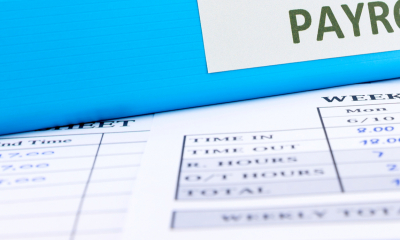
We've included useful tools and calculators, but most employers find it easiest to get professional payroll help. Your accountant can advise you on what system would suit you best and the services on offer.
Payroll tax and PAYE
Payroll taxes are generally collected through the PAYE (Pay As You Earn) system operated by employers. If you have employees, you'll almost certainly be required to operate PAYE unless all your employees have low earnings, aren't given any additional benefits or don't have income from another job or pension.
This applies even if you have set up a company with yourself as the only employee. You do not have to collect payroll taxes through PAYE if you are self-employed and have no employees.
Payroll taxes handled through PAYE include income tax and National Insurance contributions deducted from employees' pay and the employers' National Insurance paid by the business. The PAYE system involves calculating and paying any payroll taxes due to HM Revenue & Customs (HMRC), generally on a monthly basis.
You can check whether employees have paid too much income tax under PAYE by using this handy HMRC online tool.
All businesses must report payroll information and send the tax and NI deducted electronically to HMRC every time an employee is paid - known as Real Time Information (RTI) - (instead of annually through form P46).
To do this you will either need to use RTI compatible software or outsource your payroll to a payroll bureau or your accountant. Alternatively, HMRC has produced basic PAYE tools and calculators which are suitable for small employers to use to fulfil their online filing requirements.
The RTI PAYE system is linked to employees' benefit payments - now known as Universal Credit payments - to improve the accuracy rate of tax payments and benefits.
All UK businesses now have an online personal tax account. You can view your tax transactions across the range of business taxes including Self Assessment, Corporation Tax, VAT and PAYE for employers and to make payments at any time.
Payroll tax and employee benefits
The PAYE system also covers the payroll taxes due on most employee benefits, such as expenses, health insurance and company cars. The main exception is any pension contributions the business makes into an approved pension scheme. There are no tax or National Insurance payroll taxes on the value of this benefit.
In most cases, the payroll tax for benefits is assessed and collected annually. The employer must also provide details to employees, who may need to declare benefits (and income) in their own self-assessment tax returns.
Operating the PAYE payroll tax system
Effective management of payroll taxes requires you to keep accurate records of employee details, pay and benefits. You need to calculate payroll tax deductions and make accurate, timely payments and provide payroll information to both employees and to HMRC. You also need to deal with complications such as statutory sick pay and student loan repayments.
It is entirely possible to run your payroll yourself. If you have fewer than nine employees, you can use HMRC's free payroll system, the HMRC Basic Payroll Tool. The only cost is your time.
However, this payroll system will not be suitable if you take on more employees. You will need to transfer your employee data to an electronic payroll system or outsource your payroll if your business grows. This means it can make more sense to use payroll software from the point that you take on your first employee. There are a range of payroll software options and right right one for you will depend on your circumstances. Read our review of the best UK payroll software.


